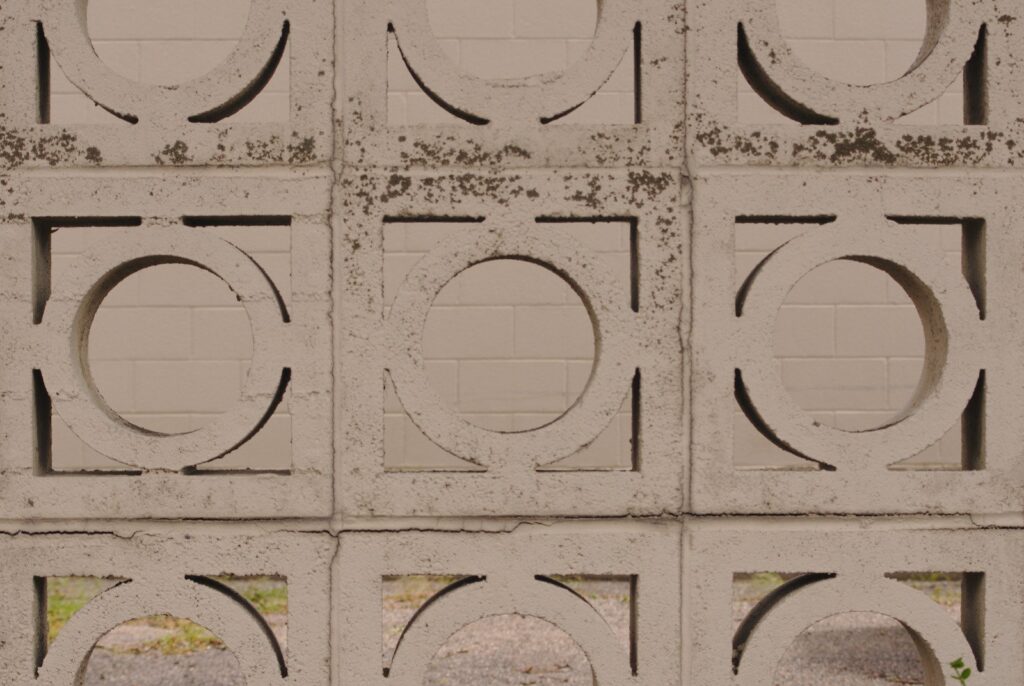Maintaining decorative concrete is essential for preserving its aesthetic appeal and durability. You should establish a routine that includes regular cleaning, sealing, and inspecting for damage. By following specific techniques and using the right products, you can prevent stains and extend the life of your surfaces. However, understanding the nuances of each maintenance step is vital for achieving the best results. Let’s explore the key components of effective decorative concrete care.

Key Takeaways
- Establish a regular cleaning routine using a soft-bristle broom or microfiber cloth to remove dirt and debris daily.
- Apply a high-quality sealant every one to three years to protect against stains, moisture, and wear.
- Promptly address any cracks or damage with appropriate fillers to maintain both aesthetics and structural integrity.
- Use eco-friendly cleaning solutions to prevent buildup and avoid damaging the decorative surface.
- Schedule professional maintenance periodically to identify underlying issues and prolong the lifespan of your decorative concrete.
Understanding the Importance of Maintenance for Decorative Concrete
When you invest in decorative concrete, understanding its maintenance is crucial for preserving its appearance and functionality. Proper care helps to maintain decorative finishes, guaranteeing they remain vibrant and visually appealing.
Longevity factors play a significant role in this process; environmental conditions, foot traffic, and exposure to chemicals can all impact your concrete’s durability. Regular inspections allow you to identify wear or damage early, facilitating timely interventions.
Additionally, applying sealants can improve the protective layer, safeguarding your decorative surfaces from stains and moisture. Familiarizing yourself with specific maintenance requirements for your type of decorative finish will further assure longevity.
Regular Cleaning Techniques for Decorative Concrete
To keep your decorative concrete surfaces looking their best, establish a daily cleaning routine that removes dirt and debris.
Incorporate seasonal deep cleaning to address accumulated grime and maintain the surface’s integrity.
Additionally, be prepared with stain removal techniques to tackle any spills or marks promptly, ensuring the longevity of your concrete’s appearance.
Daily Cleaning Routine
Although decorative concrete improves your space’s aesthetic appeal, maintaining its appearance requires a consistent daily cleaning routine.
Start with daily dusting using a soft-bristle broom or microfiber cloth to remove dirt and debris. This helps prevent scratches and maintains the surface’s sheen.
Next, monitor moisture control by promptly addressing spills and wet areas. Use a damp mop with a pH-neutral cleaner specifically designed for concrete, ensuring you don’t saturate the surface. Avoid harsh chemicals that can damage the finish.
Regularly inspecting for stains or discoloration can help you catch issues early. By incorporating these daily practices, you’ll keep your decorative concrete looking fresh and vibrant, extending its lifespan while preserving its beauty.
Seasonal Deep Cleaning
Seasonal deep cleaning is essential for maintaining the integrity and appearance of your decorative concrete. As seasons change, you face unique seasonal challenges that can affect your surfaces.
To begin, remove debris like leaves and dirt, as they can trap moisture, leading to discoloration.
Next, use a pressure washer with a suitable nozzle to clear away any stubborn grime, adjusting the pressure to avoid damaging the surface.
After washing, apply a pH-neutral cleaner to break down any remaining contaminants, ensuring you follow the manufacturer’s instructions.
Rinse thoroughly to prevent residue buildup.
Finally, inspect for any signs of wear and address them promptly, as weather impacts your concrete throughout the year.
This proactive approach keeps your decorative concrete looking its best.
Stain Removal Tips
When it comes to keeping your decorative concrete surfaces pristine, addressing stains promptly is essential.
Different stain types, such as oil, food, or rust, require specific removal techniques for effective results. For oil stains, blot the area with absorbent material, then use a degreaser and scrub with a stiff brush.
Food stains can typically be removed with warm, soapy water; however, tougher residues may need a diluted vinegar solution.
For rust stains, apply a commercial rust remover, following the manufacturer’s instructions.
Always rinse thoroughly after cleaning and avoid abrasive tools that could damage the surface.
Regularly inspect your concrete to catch stains early, ensuring your decorative surfaces remain vibrant and appealing.
The Role of Sealing in Protecting Decorative Concrete
Sealing your decorative concrete is essential for maintaining its appearance and longevity.
Regular sealing protects against moisture, stains, and wear, ensuring your investment stays intact.
You’ll also need to choose the right type of concrete sealer for best results, as different sealers offer varying levels of protection and finish.
Importance of Regular Sealing
Although decorative concrete can improve the aesthetic appeal of your space, regular sealing is crucial for its longevity and durability.
Proper sealer application acts as a barrier against moisture, stains, and UV damage, guaranteeing your concrete maintains its vibrant appearance.
To achieve the best protection, you should adhere to a specific sealing frequency, typically every one to three years, depending on your environment and usage.
Before applying the sealer, verify the surface is clean and dry to promote adhesion and effectiveness.
Additionally, choose a high-quality sealer suitable for your concrete type.
Types of Concrete Sealers
Understanding the types of concrete sealers is crucial for effectively protecting your decorative concrete.
Acrylic sealers are a popular choice due to their ease of application and ability to improve color while providing a protective layer against moisture and stains. They’re ideal for outdoor surfaces but may require more frequent reapplication.
On the other hand, epoxy sealers offer a more durable solution, forming a hard, chemical-resistant barrier. They’re perfect for high-traffic areas and indoors, providing superior protection against abrasions and impacts.
When selecting a sealer, consider your specific needs and environment to guarantee excellent performance. Proper application techniques and regular maintenance will maximize the effectiveness of either type, making certain your decorative concrete remains beautiful and well-protected.
Repairing Cracks and Damage in Decorative Concrete
When you notice cracks or damage in your decorative concrete, addressing them promptly is essential to maintaining both aesthetics and structural integrity.
Begin with a thorough crack assessment to determine the extent of the damage. For hairline cracks, you can use a concrete filler, applying it with a putty knife for a smooth finish.
For larger cracks, consider a patching compound, ensuring you clean the area first. After repairs, seal the surface to prevent moisture infiltration and further damage.
Regular inspections and timely repairs are key to damage prevention. Remember, ignoring small issues can lead to costly repairs down the line, so stay proactive in maintaining your decorative concrete and keep it looking new for years to come.
Seasonal Care Tips for Outdoor Decorative Concrete
After addressing any cracks and damage in your decorative concrete, it’s time to focus on seasonal care to guarantee its longevity and appearance.
Begin by cleaning the surface to remove dirt and debris, which can trap moisture and cause damage.
In fall, clear leaves and debris to prevent staining and decay.
For winter, apply a high-quality sealant to protect against weather impact, preventing freeze-thaw cycles from causing cracks.
During spring, inspect for any winter damage and re-seal if necessary.
In summer, consider using a UV protectant to shield against sun exposure.
Regularly monitoring and preparing your decorative concrete for each season not only improves its aesthetic but also prolongs its life considerably.
Professional Maintenance Services: When to Consider Them
While regular maintenance can keep your decorative concrete in good shape, there are times when it’s wise to enlist professional services. If you’re facing significant stains, cracks, or surface damage, a professional can restore your concrete effectively. Their expertise guarantees that repairs are done using the right materials and methods, maximizing durability.
Consider the professional service benefits, such as advanced cleaning techniques and high-quality sealants that improve longevity.
Additionally, professionals can identify underlying issues you might overlook, preventing costly repairs down the line.
Cost considerations also play a role; while hiring professionals may seem expensive upfront, the long-term value of maintaining your concrete can outweigh initial costs.
Ultimately, professional maintenance can save you time and make certain your decorative concrete remains stunning.
Frequently Asked Questions
Can I Use Vinegar to Clean Decorative Concrete Surfaces?
You shouldn’t use vinegar on decorative concrete, as its acidity can damage the surface. Instead, consider alternative cleaning solutions like pH-neutral soaps, which offer effective cleaning benefits without risking your concrete’s integrity or appearance.
How Often Should I Reseal Decorative Concrete?
You should reseal decorative concrete every 1 to 3 years, depending on exposure and wear. Regular resealing guarantees ideal surface protection, maintaining your concrete’s appearance and durability against environmental factors and daily use.
Is Pressure Washing Safe for Decorative Concrete?
Pressure washing can be safe for decorative concrete if you use proper techniques. Maintain your decorative concrete care by adjusting the pressure and nozzle distance, avoiding damage while effectively cleaning surfaces without compromising their integrity.
What Types of Cleaners Should I Avoid?
You should avoid harsh chemicals and abrasive tools when cleaning decorative concrete. These can damage the surface and alter its appearance. Opt for pH-neutral cleaners and soft brushes to maintain its integrity and aesthetic appeal.
Can Decorative Concrete Be Painted or Stained?
Yes, you can paint or stain decorative concrete. For painting, use appropriate techniques to guarantee adhesion. Staining options vary; choose acid-based for rich colors or water-based for a more translucent finish to improve the surface’s appearance.
Conclusion
By following these maintenance practices, you can keep your decorative concrete looking fresh and vibrant for years to come. Regular cleaning, sealing, and addressing any damage early on are essential steps in preserving its beauty. Don’t forget to incorporate seasonal care to protect against environmental factors. Should you encounter significant issues or need expert advice, consider hiring professional maintenance services. Taking these proactive measures will guarantee your decorative concrete remains a stunning feature of your space.
